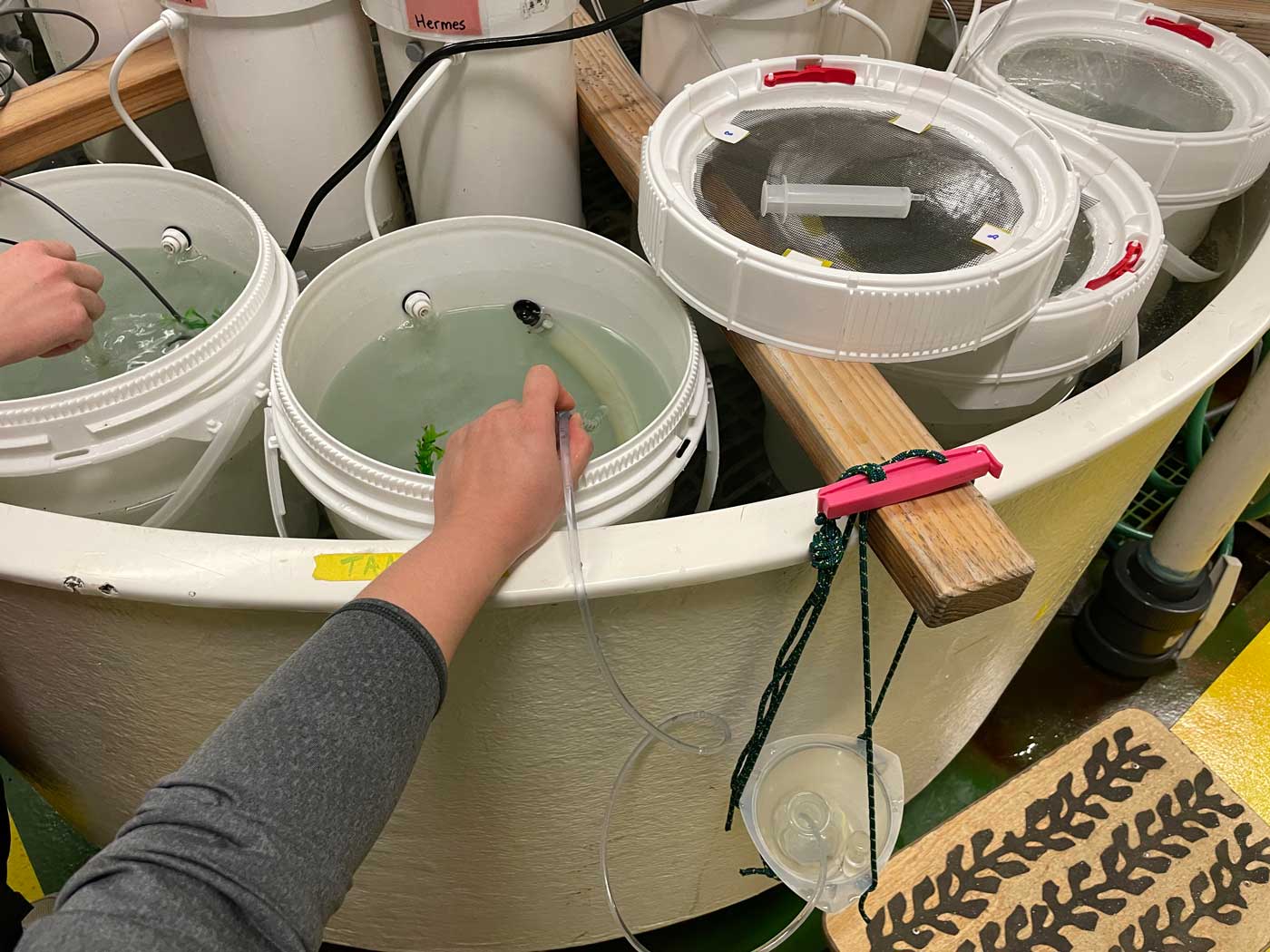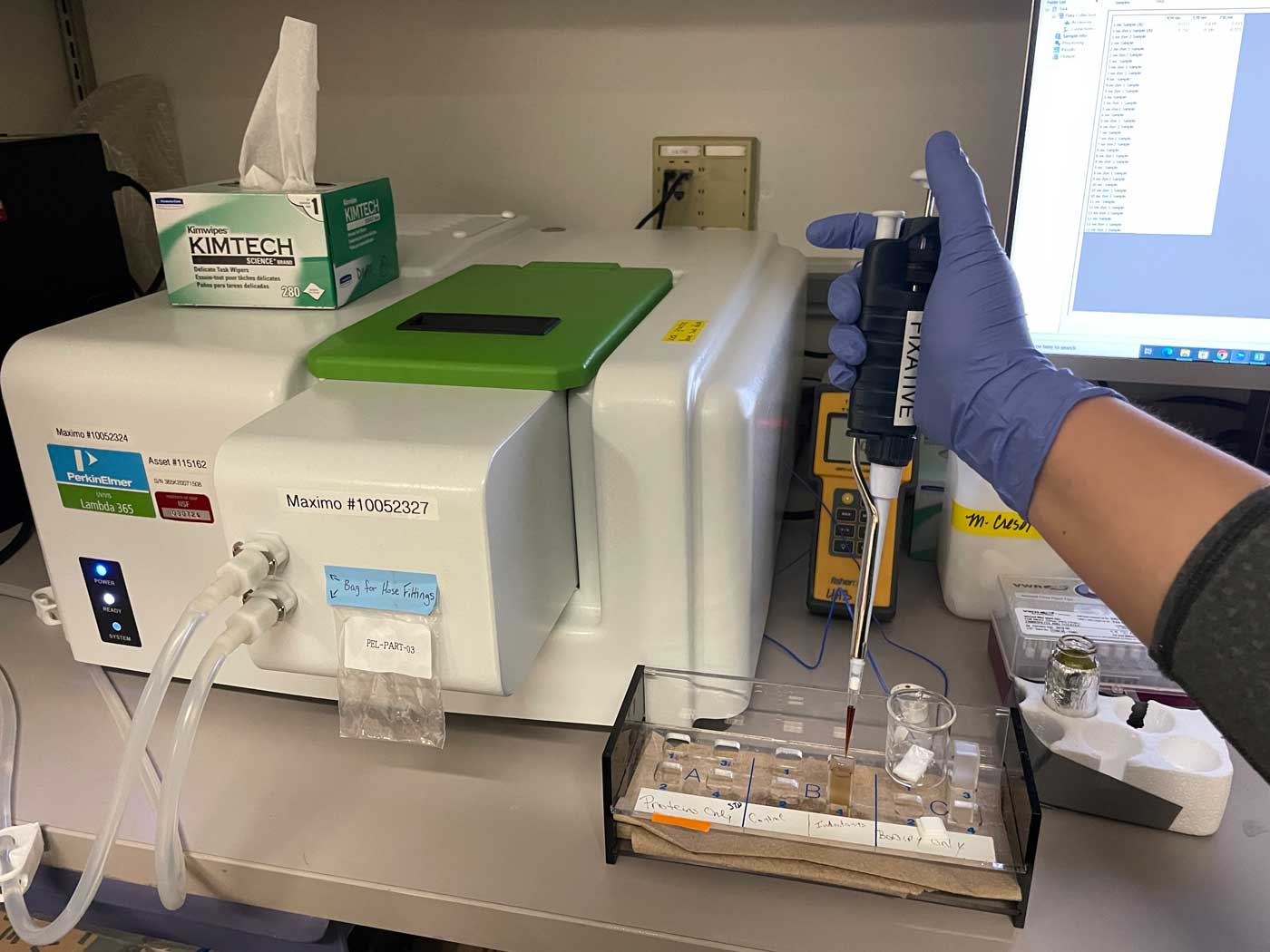 If you’ve read Addie’s latest post, then you know that the experiment is now officially underway! Read on to find out more about the water chemistry we do each day and why.
If you’ve read Addie’s latest post, then you know that the experiment is now officially underway! Read on to find out more about the water chemistry we do each day and why.
Team UAB has settled into a general routine of water chemistry in the morning and dives or other activities in the afternoon. As Addie mentioned, my job is to use the spectrophotometer to essentially double-check the accuracy of the pH measured by the pH probes in the mixing tanks. How does this work?
I take samples of seawater from the experimental buckets, then add a pH indicator dye to the seawater samples. The dye changes color from purple to yellow to red depending on the pH of the sample. Since the dye is sensitive to light, I have to work with low light levels in the room. The spectrophotometer passes a beam of light through the water and tells you how much of that light was absorbed by the water. Three wavelengths of light are used: one in the violet light range, one in the yellow light range, and one in the red light range. This tells you numerically how purple, yellow, or red the dyed water is, so you know the pH of the water based on absorbance.

To get as accurate a pH measurement as possible, we use the absorbance readings in combination with other data such as the temperature, salinity, total alkalinity, and carbonate chemistry of the seawater.
It takes me about an hour to run all six samples through the spectrophotometer, and after that I enter the data from the day into one of the spreadsheets with the formulas we use to calculate pH.

The accuracy of our pH measurements is important, since the entire experiment relies on being able to compare results among amphipods living in water of different pH values. By using the spectrophotometer and titrator every day, we can make sure the correct pH is maintained in each bucket.